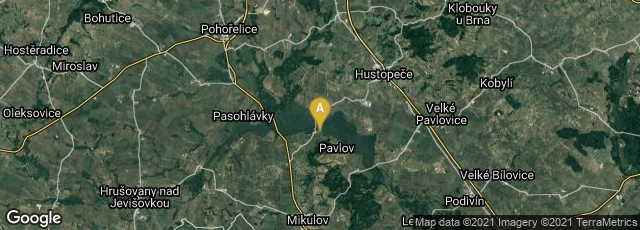

A: Dolní Věstonice, Jihomoravský kraj, Czechia
The Venus of Dolní Věstonice (Czech: Věstonická Venuše), a ceramic Venus figurine, found at a Paleolithic site in the Moravian basin south of Brno, is, together with a few others from nearby locations, the oldest known ceramic in the world, predating the use of fired clay to make pottery. It is 111 millimeters (4.4 inches) tall, and 43 millimeters (1.7 inches) at its widest point, and is made of a clay body fired at a relatively low temperature.
"The palaeolithic settlement of Dolní Věstonice in Moravia, then Czechoslovakia, now Czech Republic has been under systematic archaeological research since 1924, initiated by Karel Absolon. In addition to the Venus figurine, figures of animals - bear, lion, mammoth, horse, fox, rhino and owl - and more than 2,000 balls of burnt clay have been found at Dolní Věstonice.
"The figurine was discovered on July 13, 1925 in a layer of ash, broken into two pieces. Once on display at the Moravian Museum in Brno, it is now protected and only rarely accessible to the public. Last time it was exhibited in the National Museum in Prague from 2006-10-11 till 2007-09-02 as a part of the exhibition Lovci mamutů (The Mammoth Hunters). Scientists periodically examine the statuette. A tomograph scan in 2004 found a fingerprint of a child estimated at between 7 and 15 years of age, fired into the surface; the child who handled the figurine before it was fired is considered by Králík, Novotný and Oliva (2002) to be an unlikely candidate for its maker" (Wikipedia article on Venus of Dolní Vestonice, accessed 05-14-2009).